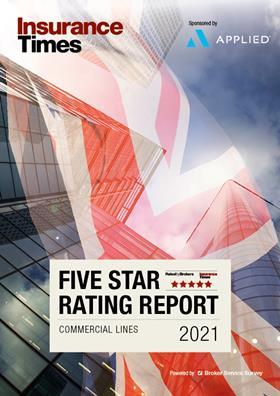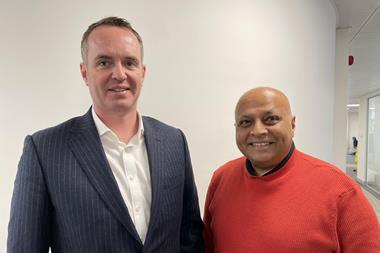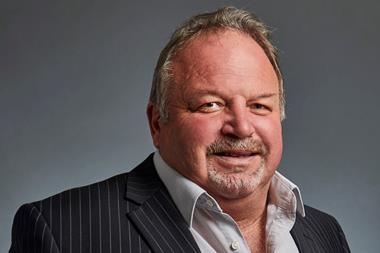The past year has been a ‘moment for reflection’ for the insurance industry, as the sector has had ‘to have a cold, hard look at itself’ following pandemic challenges
The last year has been a period of reckoning for insurance, said Ashwin Mistry, chairman of Brokerbility.
“The industry has to have a cold, hard look at itself. If the principle is that we are here to service the losses of the few paid for by the many, it seems that the many are now claiming,” he said.
On the day that hospitality firms and non-essential retailers reopened for business, Mistry likens the mood in the business community to “treading very gingerly” across an ice rink.
He has been fielding lots of questions from businesses about what insurance provision, including public liability policies, and health and safety measures they should be implementing.
As lockdown restrictions are gradually lifted in the UK and the industry tiptoes back to the office, Insurance Times speaks to brokers about the impact of the unprecedented events of the last year.
Remote working rewards

Brokers themselves have had to adjust to remote working, of course, like other businesses.
Michael Rea, chief executive of retail at Gallagher, said: “If you said we were going to start building up a pipeline of prospects, look after colleagues and do it all completely remotely, you would have said it’s not going to work, but in the last 12 months we’ve shown it can work.
“You can look after your existing raft of clients, but you can win new prospects at the same time.”
Commercial broker Konsileo, which had embraced remote working pre-pandemic, has thrived though during the past year, doubling its headcount to 40 in line with revenues.
Successful remote working isn’t just a matter of replicating existing structures with additional technology, said John Warburton, the startup broker’s managing director.
It means a less top-down structure and fewer middle managers, with brokers being expected to work in a more autonomous fashion.
He explained: “Having the same hierarchical structure doesn’t work. If you take an old school, hierarchical culture and put some coordinating tools like Microsoft Teams on top, it’s not as effective.
“It’s not just about having fewer middle managers - it’s about having a different structure. You can’t get rid of some [managers] and leave the structures in place.
“Competitors would struggle to achieve the same professional outcomes with just less supervisory resource unless they embrace a more self-organised and empowered culture and processes.”
This helps forge relationships with customers too. He added: “Our people are more accessible than if they were hidden behind landline switchboard numbers - clients have colleagues’ mobile numbers and [they] are very responsive.”
Gallagher, meanwhile, has used remote working to deploy expertise in front of more customers, said Rea.
“We have a huge amount of expertise across our business and a lot of it resides in London, in our specialist divisions. We have been able to get those experts in front of clients in a remote, tech-enabled environment,” he explained.
By running webinars on hot topics, the company can get 500 to 1,000 clients dialling in at the same time - many more than the number who would be able to travel to an event.
“It’s created efficiencies and ensured we can get experts in more specialist fields in front of people,” Rea continued.
Relationship pressures
However, the last year has certainly tested relationships between brokers and their customers as brokers have been caught in the crossfire arising from the recently concluded Supreme Court business interruption case.
Noting that the episode has “not been the industry’s finest hour”, Rea said: “We have a job to rebuild the broader reputation of the industry.”
Brokers’ concerns, according to interviews conducted for Insurance Times’s recently published Five Star Ratings Reports, include dealing with insurers that are working from home.
They report that delays getting renewal terms back from underwriters has exacerbated their difficulties in retaining clients.
The hardening market and insurers’ withdrawal from certain lines was mentioned by others.
Pressure on already edgy relationships with cash-strapped customers will have sharpened as rates have climbed during recent months, added Mistry. “At a time when policyholders can least afford it, they are being asked to pay an extra premium when they need to repair their own personal balance sheets,” he said.

However, brokers must not shy away from explaining the balance sheet pressures the insurance industry faces, Rea said.
“Early dialogue and intervention with clients is critical,” he explained. “It’s about explaining the cycle of insurance and ensuring they communicate early with clients.”
Mistry pointed out that difficult circumstances can provide brokers with the opportunity to innovate by providing their clients with “more specific, tailor-made wordings” in policies.
Not being able to visit clients due to lockdown restrictions was another challenge cited by respondents to the Five Star Ratings Report surveys.
How successfully brokers manage customers’ expectations in this environment will partly depend on their pre-pandemic relationships, said Rea.
“If you have banks of clients that you know really well, maintaining that relationship has been relatively straightforward. For emerging brokers, building relationships is much more challenging.”
Mistry said that face-to-face meetings, where they have been permitted under lockdown regulations, remain a better and less transactional way of conducting business than Zoom chats.
Future reflections
As lockdown eases though, firms are looking at returning to the office.
Rea said: “We are a people business and tend to work better when we can bounce ideas off the people next to us.”
For example, being able to hand over leads and prospects works better in a contact centre than if staff are working at home.
He added: “We will have a more flexible approach [moving forward] because the last 12 months have proven we can thrive in an environment where we can’t see people, but we would like to get as many people back into the office when restrictions are lifted.”
Mistry agreed that there is an “acceptance” that hybrid working is here to stay and that employers who insist on a return to the old 9am to 5pm run the risk of being painted as “draconian”.
However, while they have may have navigated the storm of the last year, some smaller brokers will be facing “challenging” trading results, said Rea, who predicts further consolidation in the industry.
“Insurance brokers have coped and survived in a global pandemic, margins are robust and we are operating in a UK market that is still largely unconsolidated. The last 12 months have been a moment for reflection for a number of brokers,” he added.
Hosted by comedian and actor Tom Allen, 34 Gold, 23 Silver and 22 Bronze awards were handed out across an amazing 34 categories recognising brilliance and innovation right across the breadth of UK general insurance.




















































No comments yet